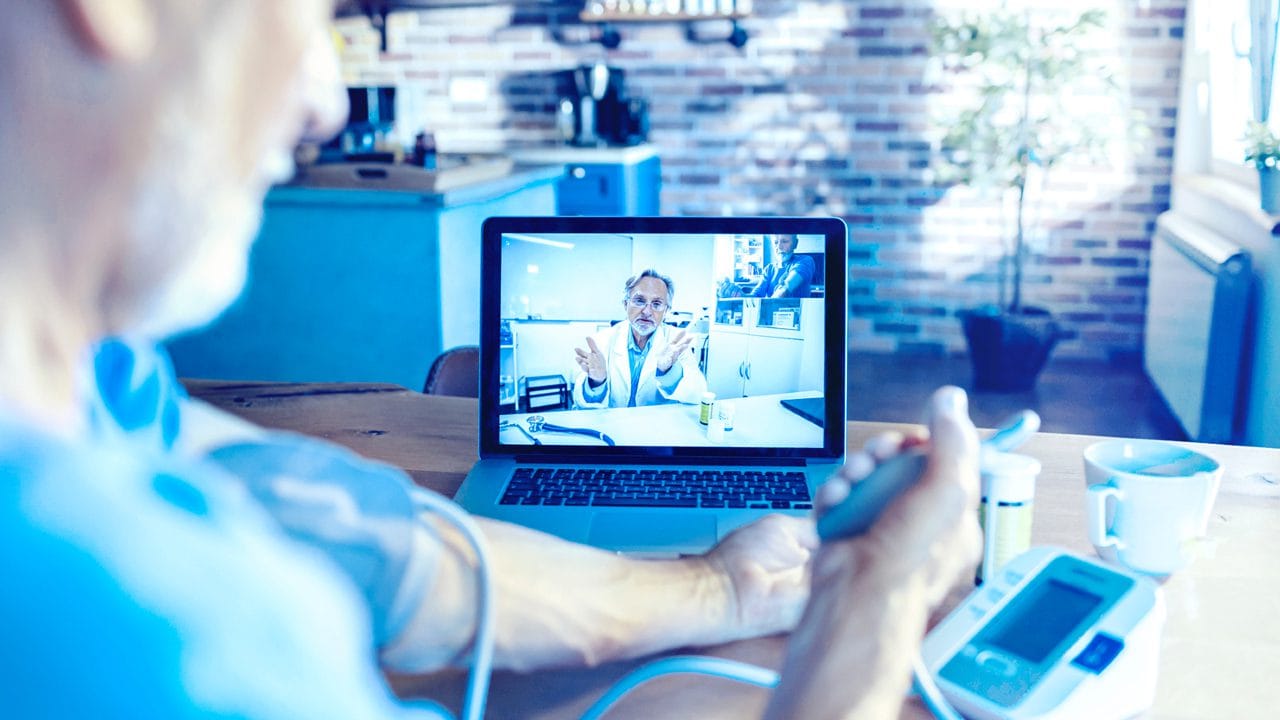Telemedicine has revolutionized the way healthcare is delivered, providing patients with easier access to medical services and professionals with new tools for diagnosis and treatment. Understanding the origins and evolution of telemedicine can provide valuable insights into its current role and future potential in healthcare. This blog explores the question, “When did telemedicine begin?” and delves into its development and impact over time.
The Origins of Telemedicine
Early Beginnings
Telemedicine, as a concept, can be traced back to the early 20th century. Although the technology was primitive by today’s standards, the fundamental idea was to use telecommunications to provide medical care to distant patients. One of the first documented uses of telemedicine occurred in the 1920s when radiological images were sent over telephone lines from one location to another.
NASA and the Space Program
A significant boost to telemedicine came from the space program. In the 1960s, NASA developed telemedicine technologies to monitor the health of astronauts in space. This innovation was crucial for ensuring the well-being of astronauts during long missions, providing a model for remote patient monitoring that would later be adapted for broader medical use.
Early Clinical Applications
In the 1950s and 1960s, hospitals and medical centers began experimenting with telemedicine to reach patients in remote areas. For instance, a closed-circuit television link was established between the Nebraska Psychiatric Institute and Norfolk State Hospital, enabling psychiatric consultations across 112 miles.
Evolution of Telemedicine
The Rise of the Internet
The advent of the internet in the late 20th century marked a turning point for telemedicine. The ability to transmit data quickly and securely allowed for more sophisticated and reliable telemedicine services. This period saw the development of various telehealth platforms and the integration of telemedicine into mainstream healthcare.
Technological Advancements
The evolution of telemedicine has been closely tied to technological advancements. Innovations such as high-speed internet, video conferencing, and mobile devices have made it possible to provide real-time consultations and remote monitoring. These technologies have expanded the reach of telemedicine, making it accessible to more people.
Telemedicine in the 21st Century
In the early 21st century, telemedicine continued to grow, driven by the increasing demand for convenient healthcare solutions. The development of telemedicine apps and platforms, like Teladoc, has made it easier for patients to access medical advice and treatment from the comfort of their homes. These platforms can address a wide range of health issues, from minor ailments to chronic conditions.
The Impact of COVID-19
The COVID-19 pandemic in 2020 significantly accelerated the adoption of telemedicine. With social distancing measures in place and healthcare facilities overwhelmed, telemedicine became a critical tool for providing care while minimizing the risk of virus transmission. The pandemic highlighted the importance of telemedicine in maintaining healthcare services during a crisis.
Key Milestones in Telemedicine
Early Telecommunication Efforts
- 1920s: Transmission of radiological images via telephone lines.
- 1950s: Closed-circuit television for psychiatric consultations.
- 1960s: NASA’s development of remote health monitoring for astronauts.
Internet and Digital Technology
- 1990s: Emergence of internet-based telemedicine platforms.
- 2000s: Introduction of mobile telemedicine apps.
- 2010s: Widespread adoption of video conferencing for medical consultations.
COVID-19 Pandemic
- 2020: Surge in telemedicine use due to the pandemic.
- 2021 and Beyond: Continued integration of telemedicine into routine healthcare.
Applications of Telemedicine Today
Can Doctors Diagnose Over the Phone?
One of the most common questions about telemedicine is whether doctors can diagnose patients over the phone. The answer is yes, to an extent. Many conditions can be diagnosed through a combination of patient history, symptoms, and visual examination via video calls. However, some conditions may still require in-person visits for a thorough physical examination or diagnostic tests.
Telemedicine Pain Management
Telemedicine has become an essential tool in pain management, offering patients access to specialists who can provide guidance on managing chronic pain. Through telemedicine, pain management specialists can:
- Assess Pain Levels: Using visual and verbal cues to evaluate pain.
- Adjust Medications: Prescribing or modifying pain medications as needed.
- Provide Therapy: Offering cognitive-behavioral therapy and other non-pharmacological treatments.
Infectious Disease Telemedicine
Telemedicine has proven particularly valuable in managing infectious diseases. Infectious disease specialists can:
- Monitor Patients Remotely: Keeping track of symptoms and progression without risking contagion.
- Consult on Treatment Plans: Advising on the best treatment strategies for infections.
- Coordinate Care: Working with other healthcare providers to ensure comprehensive care.
How Telemedicine is Transforming Health Care
Telemedicine is transforming healthcare in several ways:
- Increased Access: Making healthcare services available to people in remote or underserved areas.
- Convenience: Allowing patients to receive care without leaving their homes.
- Efficiency: Reducing the need for travel and wait times in healthcare facilities.
- Continuity of Care: Enabling continuous monitoring and follow-up for chronic conditions.
What Can Teladoc Treat?
Teladoc is one of the leading telemedicine platforms, offering a wide range of services. Through Teladoc, patients can receive treatment for:
- Common Illnesses: Such as colds, flu, and allergies.
- Chronic Conditions: Including diabetes, hypertension, and asthma.
- Mental Health: Providing access to licensed therapists and psychiatrists for conditions like anxiety and depression.
- Specialist Consultations: Offering advice from specialists in various fields, including dermatology and nutrition.
Telemedicine at Urgent Care of Texas
At Urgent Care of Texas, we have embraced telemedicine as a vital part of our healthcare delivery. Our services include:
- 24/7 TeleMedicine: Access medical advice, diagnoses, and prescriptions anytime, anywhere.
- Covid-19 Testing: Remote consultations and guidance on testing and management.
- Primary Care: Ongoing care for chronic conditions and routine health concerns.
- Specialist Services: Remote consultations with specialists in various fields.
Our Mission and Values
- Compassion: Providing empathetic care with humanity and respect.
- Excellence: Striving for the highest quality medical care and customer service.
- Collaboration: Working together to provide the best possible patient care.
- Honesty: Valuing integrity and transparency in patient-provider relationships.
- Accessibility: Ensuring extended hours and easy access to healthcare records through our EMR system.
Locations
We have urgent care centers in Arlington, Burleson, and Plano, Texas, ready to provide comprehensive care when you need it.
Conclusion
Telemedicine has come a long way since its inception, evolving from simple telecommunication efforts to sophisticated digital healthcare platforms. The question “When did telemedicine begin?” opens up a fascinating history of innovation and adaptation in response to technological advances and societal needs. Today, telemedicine continues to transform healthcare by improving access, convenience, and efficiency. Whether you’re looking for routine care, specialist advice, or emergency consultations, telemedicine offers a versatile solution to meet your healthcare needs.
Request Appointment
Disclaimer: Please note that the content presented in this blog serves solely for educational purposes and should not be interpreted as medical advice. For personalized diagnosis and treatment options, it is advisable to seek guidance from a qualified healthcare professional.







